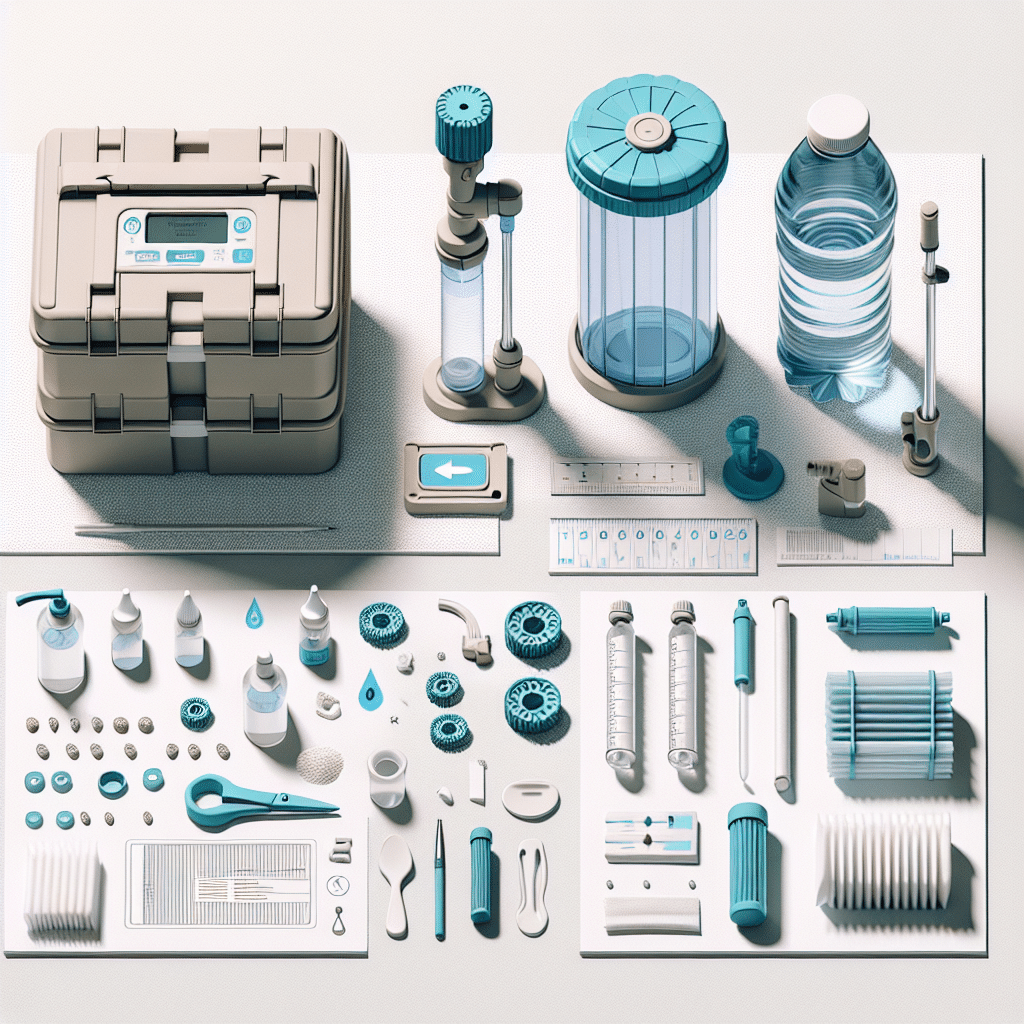Understanding Water Purification
Before assembling your portable water purification kit, it’s essential to understand the types of contaminants found in untreated water. Water can harbor bacteria, viruses, protozoa, and chemicals that can pose health risks. The primary methods for purifying water include filtration, chemical treatment, and boiling. Knowing these methods will help guide your choices in assembling an effective kit.
Essential Components of a Portable Water Purification Kit
-
Water Filters
- Ceramic Filters: These filters can remove bacteria and protozoa, with a pore size of 0.2 microns. They are reusable and can last for several weeks with proper maintenance.
- Activated Carbon Filters: These filters can absorb chemicals and improve taste. They are often used in combination with other filtering methods to enhance overall water quality.
-
Chemical Treatment
- Water Purification Tablets: Iodine or chlorine dioxide tablets are lightweight and effective against bacteria and viruses. Recommended doses typically range between 1-2 tablets per liter, with a wait time of at least 30 minutes before consumption.
- Bleach: Household bleach can also be used as an emergency disinfectant. Use unscented bleach and add 2-4 drops per quart of clear water, letting it sit for 30 minutes before use.
-
Boiling Equipment
- Portable Stove or Campfire Supplies: A compact camp stove allows for easy boiling of water. Ensure you have fuel sources like propane or sticks for campfires.
- Pots or Containers: Use a durable metal pot or container specifically designed for boiling. Look for lightweight options to keep your kit portable.
-
Activation & Testing
- TDS Meter (Total Dissolved Solids Meter): This device helps measure the purity of your water. A TDS level below 500 ppm is generally acceptable for drinking.
- Portable Water Testing Kits: These kits can test for specific contaminants, including bacteria and pH levels, ensuring your water is safe for consumption.
Additional Useful Items
-
Collapsible Water Containers
- Lightweight and space-efficient, collapsible water containers are excellent for collecting and storing purified water. Look for BPA-free options that are also durable.
-
Microfiber Cloths
- Useful for filtering larger particles that may clog filters. They can also be employed to clean containers and ensure a hygienic water collection process.
-
Duct Tape
- Ideal for quick repairs on your equipment or sealing containers. Duct tape can also assist in securing items within your kit.
-
Multi-tool
- A durable multi-tool can provide various functions, including knife capabilities for cutting materials and preparing food while out in the wild.
Assembling Your Kit
-
Choose a Suitable Container
- Start with a sturdy backpack or dry bag to hold all components securely. Make sure it fits comfortably for transport, aligning with your outdoor activities.
-
Organize Components
- Lay out all your items and categorize them by function. Place filters in a separate pouch to prevent damage, organize chemical treatments in a waterproof section, and keep testing kits easily accessible.
-
Weight Considerations
- As portability is vital, reduce weight by opting for compact and multifunctional items. Avoid glass containers, which are heavier and can shatter.
-
Label Everything
- Clearly label each bag or component to ensure you can quickly find what you need during an emergency. Consider using waterproof labels.
Maintenance and Safety
-
Regularly Check Expiry Dates
- Water purification tablets and bleach lose efficacy over time. Regularly check and replace these items as necessary to ensure your kit functions optimally.
-
Clean Filters Regularly
- Follow manufacturer recommendations on how to clean and maintain your filters. Keep them free from sediment buildup by rinsing after each use.
-
Practice Using the Kit
- Familiarize yourself with the components in your kit before a critical situation arises. Practice using water purification methods in your home to build confidence.
-
Store Properly
- Keep your kit in a cool, dry place when not in use. Exposure to extreme temperatures and humidity can degrade components over time.
Where to Purchase Components
- Outdoor Supply Stores: Retailers focused on camping and adventure gear typically offer a wide range of water purification options.
- Online Marketplaces: Websites like Amazon or specialized survival gear shops can provide even more choices, often with user reviews to guide your selections.
- Local pharmacies or supermarkets: For chemical treatments like bleach or water purification tablets, these are often found in basic household sections.
Final Tips
- Always consider the environment you’ll be in when selecting components for your kit. The type of water source and its potential contamination will affect what items you prioritize in your assembly.
- Share your water purification knowledge with fellow outdoor enthusiasts, fostering an awareness of safe drinking practices in the wild. Encouraging preparedness can greatly enhance safety during outdoor adventures.
By assembling a portable water purification kit with these essential components and following these tips, you can ensure safe drinking water while enjoying the great outdoors.
